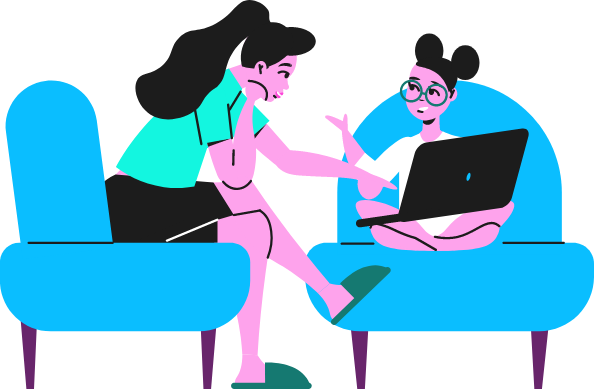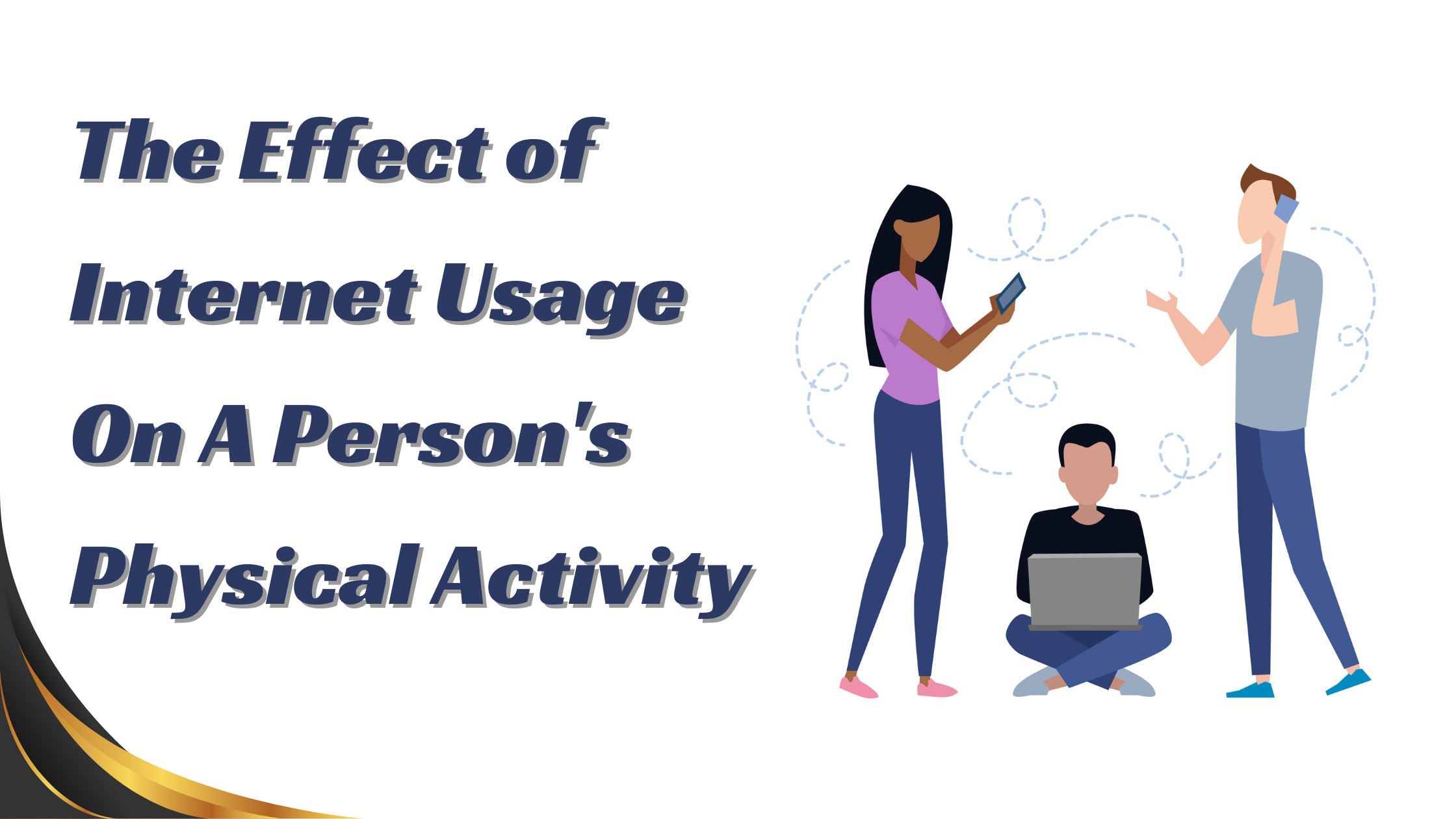The Effect of Internet Usage On A Person’s Physical Activity
- 1 The Negative Impact of Internet Usage on Physical Activity
- 2 Impact on Specific Groups
- 3 Potential Mechanisms of Negative Impact
- 4 Positive Potential of Internet Usage on Physical Activity
- 4.1 Access to Health Information
- 4.2 Online Communities and Social Support
- 4.3 Positive Impact on Older Adults
- 5 Age Group-Specific Effects
- 6 Summary of Findings
The Negative Impact of Internet Usage on Physical Activity

Overview of Negative Correlation
Multiple studies show a negative correlation between internet usage and physical activity levels. For instance, a survey of 1,200 Chinese residents found that individuals with higher internet usage, particularly for passive activities like browsing social media or watching online content, participated less in physical activity. This trend is not isolated; a separate study focusing on college students revealed that those who spent more than 3 hours per day online engaged in significantly fewer days of vigorous physical activity.
Additionally, a large-scale study of 2,000 children demonstrated a significantly negative correlation between hours spent on technology (including the internet, social media, and video games) and physical activity levels. The regression analysis from this study further confirmed that increased screen time predicts lower physical activity levels among children. These findings highlight a critical concern: as internet usage increases, physical activity decreases, particularly among younger populations.
Impact on Specific Groups
Children and Adolescents
Children and adolescents show a marked decrease in physical activity with increased internet usage. A study involving 2,500 children between ages 6 and 15 found that every additional hour spent online reduced their likelihood of engaging in physical activity by 12%. This reduction is particularly concerning during the developmental years when physical fitness is crucial for healthy growth. For example, children who spend over 4 hours daily online are 50% less likely to meet recommended physical activity guidelines than their peers who spend less time online.
College Students
Excessive internet usage is linked to decreased physical activity among college students. A study conducted with 800 students found that those who reported spending over 3 hours daily on the internet had 20% fewer days of vigorous physical activity than students with lower internet usage. Notably, the type of internet activity also matters. For instance, students who primarily used the Internet for social networking were less likely to participate in physical activities than those who used it for academic purposes. The study showed that academic internet use correlated with higher physical activity levels, suggesting that the purpose of internet use plays a role in determining its impact on physical activity.
Potential Mechanisms of Negative Impact
Displacement of Physical Activity
The most direct mechanism through which internet usage negatively impacts physical activity is through time displacement. When individuals spend more time online, especially in activities requiring prolonged screen time, they have less time for physical activities. For example, paying an additional hour daily on the internet is less available for exercise, reducing physical fitness levels over time.
Sedentary Entertainment
The internet offers various passive entertainment options, such as streaming services, social media platforms, and online gaming. These activities inherently encourage prolonged periods of inactivity. For instance, a survey of 2,000 internet users worldwide found that 70% of respondents spend over 2 hours daily engaged in online entertainment. This type of engagement often reduces motivation to participate in physical activities, leading to a more sedentary lifestyle.
Decline in Social Motivation
Addictive internet use can also lead to a decline in in-person social interactions, reducing social motivation for physical activities. A study of 1,500 adults found that those with higher levels of internet addiction were 30% less likely to engage in group sports or physical activities with friends. This reduction in social engagement further contributes to a decline in physical activity, as people who lack social support are less likely to be motivated to exercise regularly.
These mechanisms collectively explain why increased internet usage is associated with lower physical activity levels, particularly among younger populations.
Positive Potential of Internet Usage on Physical Activity

Access to Health Information
The internet provides valuable access to health information, which can directly promote physical activity. For instance, 75% of internet users worldwide have reported using the internet to search for health-related information. This accessibility enables individuals to learn about exercise routines, healthy diets, and wellness programs, which can motivate them to engage in regular physical activity.
For example, online platforms like YouTube and fitness websites offer free workout videos and training programs that users can follow at home. A study involving 500 adults found that 65% of those who accessed online fitness resources engaged in more physical activity compared to those who did not use such resources. This indicates that the Internet is crucial in encouraging individuals to adopt healthier lifestyles.
Online Communities and Social Support
The internet also facilitates the creation of online communities and social support networks that can stimulate interest in physical activity. Platforms like Reddit, Facebook groups, and specialized fitness forums allow users to connect with like-minded individuals with similar fitness goals. These communities provide encouragement, share success stories, and offer advice, which can increase participants’ motivation to stay active.
For example, a study of 1,000 participants in online fitness communities found that 80% reported higher physical activity levels after joining these groups. The social accountability and positive reinforcement provided by these communities significantly contributed to their increased engagement in physical exercise.
Positive Impact on Older Adults
While internet usage often correlates with reduced physical activity among younger populations, it can positively impact older adults. Studies show that older adults frequently use the internet are more likely to exercise physically. For instance, a study involving 1,200 older adults found that those who used the internet at least once daily were 30% more likely to participate in regular physical activity than those who did not.
Activities such as watching the news, chatting with friends online, or participating in virtual fitness classes were mainly associated with increased physical activity in this demographic. Unlike younger populations, older adults often use the internet to enhance their physical and mental well-being, leading to a more active lifestyle.
Age Group-Specific Effects
Children and Adolescents
Increased internet usage typically leads to decreased physical activity in children and adolescents. The correlation between screen time and physical inactivity is robust in this age group. For instance, children who spend over 4 hours daily on the Internet are 50% less likely to engage in vigorous physical activity. This trend is troubling because physical activity is essential for healthy growth and development during these years. The passive nature of online gaming and social media further exacerbates this issue.
College Students
Among college students, high levels of internet usage are associated with lower physical activity, mainly when the internet is used primarily for social networking. A study involving 800 college students found that those who spent over 3 hours daily on social media had 20% fewer days of vigorous physical activity than their peers who spent less time online. However, when students used the internet for academic purposes, their physical activity levels were higher. This suggests that the impact of internet usage on physical activity depends on how the internet is used.
Older Adults
In contrast, frequent internet use among older adults is positively associated with higher physical activity levels. A study of 1,200 older adults revealed that those who used the internet regularly were 30% more likely to participate in physical activities such as walking, yoga, or virtual fitness classes. Specific online activities, like chatting with friends or engaging in online educational programs, were linked to increased exercise participation. This indicates that the Internet can serve as an effective tool for promoting physical activity among older adults, enhancing their overall well-being.
Summary of Findings
Key Findings by Age Group
Children and Adolescents: Increased internet usage decreases physical activity, especially for sedentary activities like gaming and social media. Children who spend more than 4 hours online daily are 50% less likely to meet physical activity guidelines.
College Students: High internet usage correlates with reduced physical activity, particularly for social networking. College students who spend over 3 hours daily on social media have 20% fewer days of vigorous physical activity.
Older Adults: Frequent internet use positively influences physical activity levels. Older adults who use the internet daily are 30% more likely to engage in physical activities, with specific online activities encouraging exercise participation.
Complex Relationship Between Internet Use and Physical Activity
While excessive internet usage generally hinders physical activity in younger populations, it can promote physical activity among older adults. The impact of internet use on physical activity varies significantly across age groups and depends on how the internet is utilized.

















